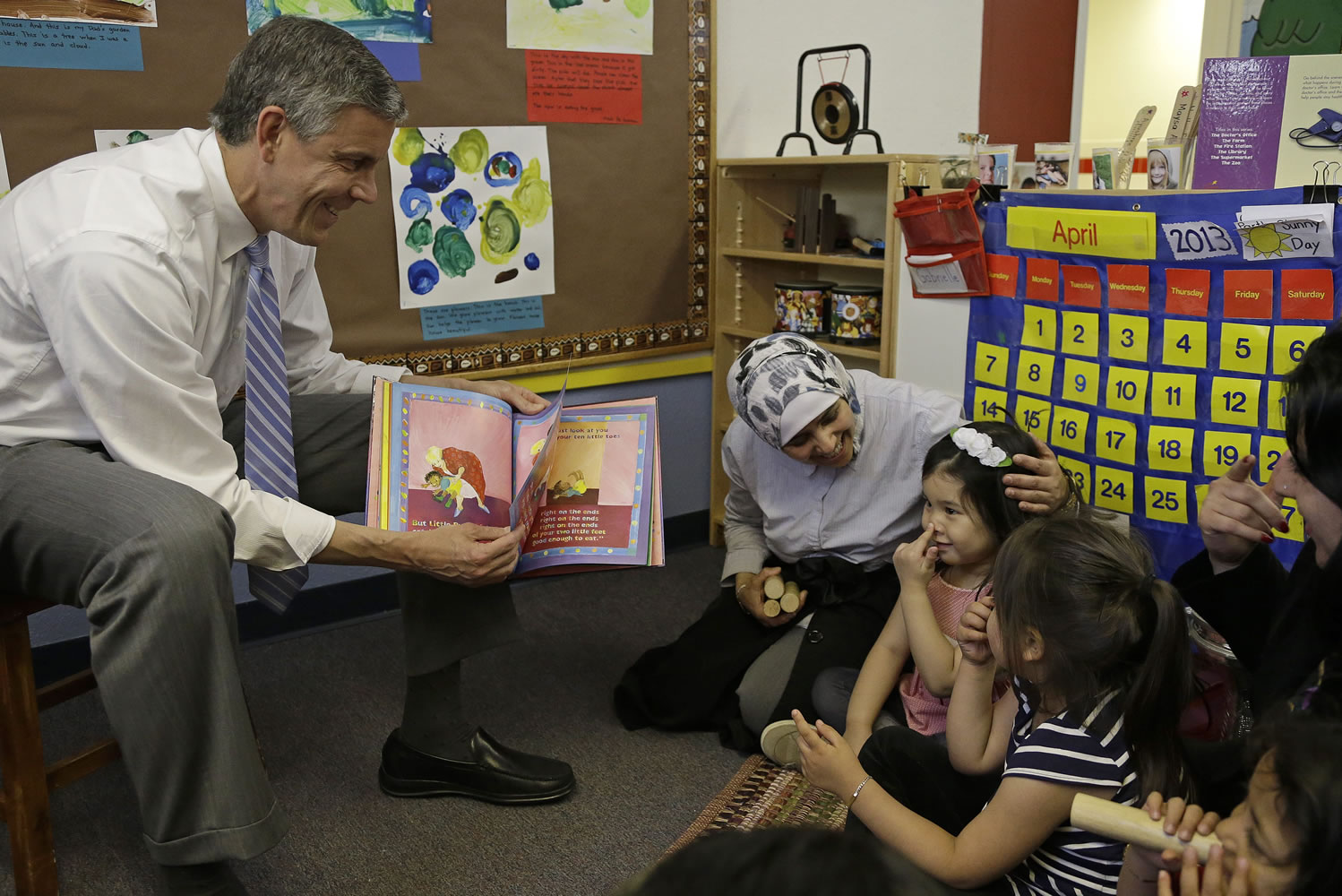www.highschoolequity.org/images/WaiversReport_R8.pdf
WASHINGTON — Millions of at-risk students could fall through the cracks as the Education Department gives states permission to ignore parts of No Child Left Behind, according to a study education advocates released Tuesday.
The Education Department has been giving some states waivers from the education law’s requirements, including those to collect and publish data about students and then use the results to pinpoint problem schools. The resulting patchwork of rules — from Miami to Seattle — has given states more freedom to carry out plans to boost education but has allowed almost 2,300 schools to shed their label of seriously troubled, according to numbers compiled at the Campaign for High School Equity.
“It appears to us that waivers could lead to fewer students of color receiving the support they need,” said Rufina Hernandez, executive director for the Campaign for High School Equity.
Her coalition of education reformers, civil rights activists and policy analysts studied the 34 states and the District of Columbia that had received waivers from No Child Left Behind before April. (Another six states and a collection of individual districts in California have won waivers since then.)
The results show students who are at the highest risk of dropping out — those from poor families, students whose native language is not English, those with learning disabilities and minority students — are often no longer tracked as carefully as they were before Education Secretary Arne Duncan began exempting states from some requirements if they promised to better prepare their students for college or careers.
The Education Department had no comment on the study but Duncan has been vocal in calling for a rewrite of No Child Left Behind that would render his waivers moot.
Under the original No Child Left Behind, schools that failed to teach at-risk students would be flagged if one group wasn’t keeping pace. If one of the subgroups failed to meet its performance targets for two consecutive years, officials were required to stage an intervention to turn the entire school around.
But the advocates’ review finds those in-depth reporting requirements have fallen by the wayside under the waivers. An intervention is no longer automatically triggered in as many as 19 states, meaning those efforts that once were at the center of the law are now optional. In 16 states, student groups are lumped together and treated as one bloc of at-risk pupils, essentially scrapping the reporting of at-risk groups by label.
The waivers make it easier to mask stumbles.
“The No Child Left Behind system itself was far from perfect,” said Phillip Lovell, vice president for federal advocacy with the Alliance for Excellent Education. “Where is succeeded was shining the spotlight on the subgroups.”
That spotlight now has dimmed, he said.
Take, for instance, Ohio. In that state, 856 schools failed to meet their performance benchmarks for at-risk students two years in a row. Under the waiver Duncan approved, the number of schools called troubled schools fell to 445. Of that smaller sum, only 162 schools were deemed an urgent priority.
That’s not necessarily a bad thing, said Mike Petrilli, who has studied No Child Left Behind as a leader of the reform-minded Fordham Institute.
“The waivers allow states to prioritize. We should be saving the toughest interventions for schools that have low proficiency and low progress,” said Petrilli, a former official at the Education Department. “The spirit of the law is to make sure that kids don’t get left behind.”
In all, 2,292 schools nationwide were deemed no longer needing special attention for improvement in states operating under waivers. In 13 states, the number of schools identified for intervention has dropped by more than 100 schools.
Duncan’s department can adjust this, though, when states return to the Education Department seeking to continue running their schools outside of No Child Left Behind’s rules. Duncan’s hall passes only last one year and states face the threat of returning to No Child Left Behind’s requirements if they don’t execute their improvements plans.
The Education Department has already warned Kansas, Oregon and Washington state that their exemptions are at risk for the 2014-15 academic year if the schools there don’t deliver on their applications’ promises.
“They can get stricter to make sure the accountability happens in states and trigger the interventions that were in place under No Child Left Behind,” said Hernandez, whose coalition includes the NAACP, the National Urban League and the National Council of La Raza.
In 2011, the Education Department announced that states could petition Duncan for waivers from No Child Left Behind’s ambitious requirements, such as having all students read and count at grade level by 2014 or else risk their federal funding.
In most cases, Duncan has agreed to their requests in exchange for promised improvements. Illinois, Iowa, Texas and Wyoming are still waiting for Duncan’s verdict for their applications.
Duncan had hoped the specter of waivers would compel Congress to update No Child Left Behind, which expired in 2007 without renewal.
“The same year that No Child Left Behind came out, the iPod came out,” Petrilli said. “We’re still on No Child Left Behind, version 1.0, and we’ve had new versions of the iPod, iPhone, iPad.”
Various rewrites of the law have been discussed but none has made its way to the White House for a president’s signature. The Republican-led House has passed a version; a rewrite has been completed in the Senate education panel but no vote of the full body has been scheduled.
“NCLB is six years overdue for an update, and nearly all agree that it should be replaced with a law that gives systems and educators greater freedom while continuing to fulfill the law’s original promise,” Duncan wrote in Sunday’s Washington Post.
“In the months ahead, I will ask Congress to listen to those doing the real work of education change,” he added.



